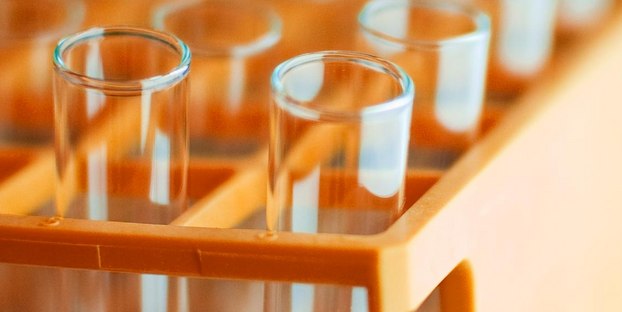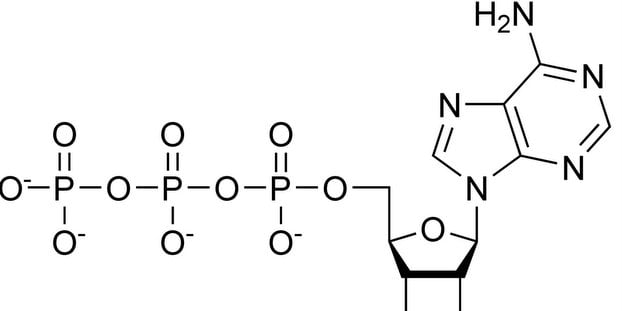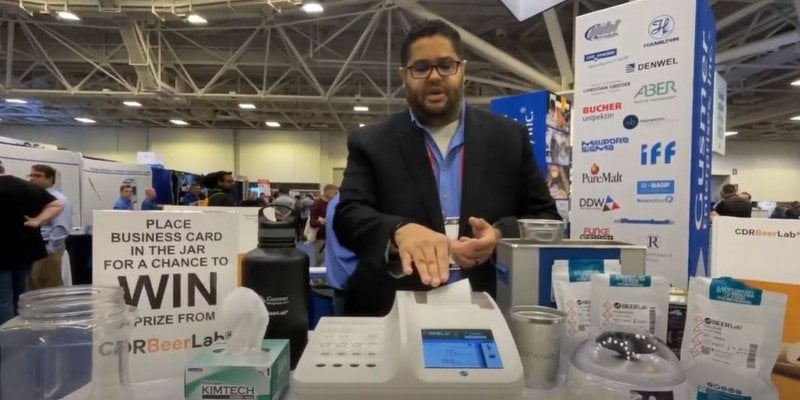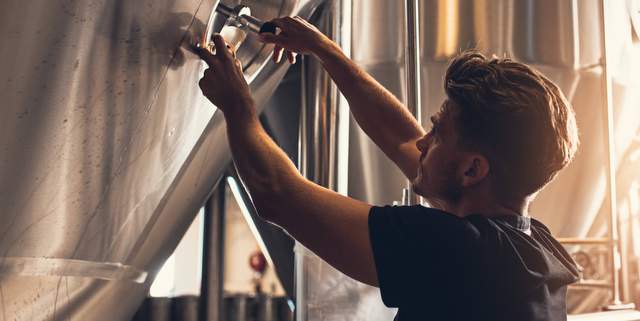The science is based on the detection of organic materials on surfaces and in water samples using a bioluminescent reaction. The pen-shaped test devices contain enzyme from fireflies that reacts with organic material to produce light, which is then measured in a handheld meter about the size of a TV remote (called a luminometer). The luminometer outputs a number: the lower that number, the cleaner the surface (or less contamination in the water sample if a CIP system is being tested). Avery Brewing integrated ATP testing into its sanitation protocols in 2011.
Click here for an in-depth ATP primer
“The more we used [the ATP monitoring system] the more we came to depend on it – and now it’s a very integral part of our cellar program and cleaning in general,” Christiansen said. “We’ve tested the ATP meter to the point where we’re comfortable with it telling us what’s clean and what’s not clean.”
With around-the-clock production, as soon as tanks are emptied at Avery, they are immediately deep cleaned and prepped for the next beer. Anyone who is trained on how to clean a piece of equipment knows how to use the ATP meter to validate their cleaning instantly and “gives people confidence that they did a good job getting the tank clean.”
Luckily, the occasional-yet-inevitable high ATP score offers more insight in addition to the need to repeat the caustic cycle and re-test. The swab can be taken to the brewery’s on-site micro lab, where it can be rubbed on a plate to see what grows. With a long list of wild ales in production – sours, barrel-aged, and other high-brettanomyces beers – cross contamination and microbial control from tank to tank is critical to prevent after-package fermentation and off-flavors.
For Rob Christiansen, the peace of mind brought by a quick validation tool reinforces his confidence in the quality control systems he and his team have built at Avery. “The ATP meter is just another way to not only make all of us sleep better at night, but it’s also a great tool for the staff too….Before the ATP meter you’d clean the tank and you’d say ‘Okay, I did my job’ and you’d close it up and it would be ready for the next beer. And now you can go into the lab and validate what you just did and you have the peace of mind that it’s clean. We’ve been doing this for a very long time now and we have the right people in the right position to come up with the right SOP’s to validate everything.”
Avery Brewing Co. is not the first, nor will it be the last, brewery (big or small) to embrace ATP testing with open arms. “Some breweries just don’t know about ATP tests, they’re unsure of exactly what the test does.” To them, we say, just ask Rob Christiansen.
Thanks to Lauren Roady, Marketing Manager of Hygiena, for this feature. To learn more about ATP testing in breweries and watch an instructional video on how ATP testing works, visit the Hygiena website.





RT @HygienaUSA: RT @CraftBrewingBiz: The story of @AveryBrewingCo quality assurance ATP testing. Some good insight from @HygienaUSA http://…
Juan Carlos Sibaja Delcore liked this on Facebook.
Todd Parker liked this on Facebook.
RT @CraftBrewingBiz: The story of @AveryBrewingCo quality assurance ATP testing. Some good insight from @HygienaUSA http://t.co/wwEUa3KSLC